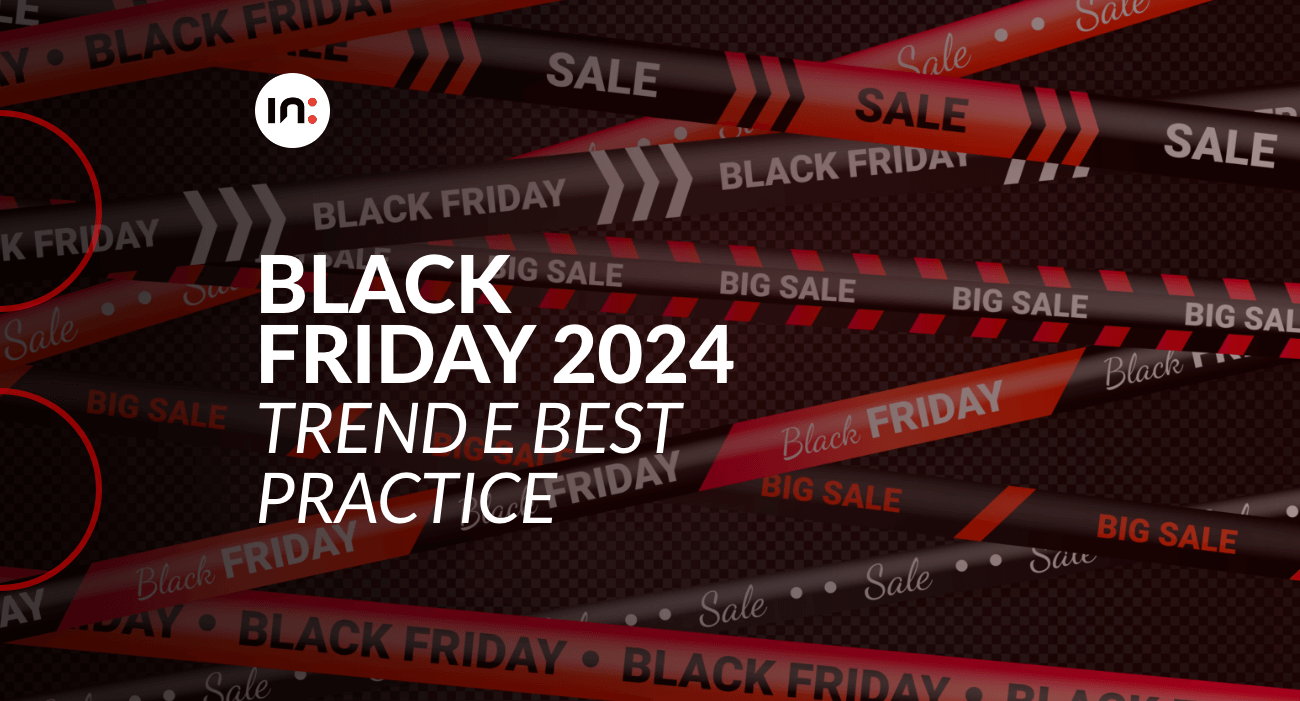
BLACK FRIDAY 2024: TRENDS AND BEST PRACTICES
Black Friday, originally born in the United States on the first Friday after Thanksgiving, has become a global commercial event that marks the start of the holiday shopping season. Initially prevalent in English-speaking countries, it has evolved into a global cultural phenomenon thanks to globalization and e-commerce. Black Friday deals, which were initially limited to physical stores, have also expanded online, especially with the introduction of Cyber Monday in 2005, turning the entire weekend into a hybrid shopping experience.
In 2023, according to Adobe Analytics, online sales in the United States during Cyber Week (from Thanksgiving to Cyber Monday) hit a record of over $38 billion, marking a 7.8% increase compared to the previous year. Approximately 59% of online sales were made via smartphones, showing a 4% growth from 2022, with increased usage of “Buy now, pay later” options for more flexibility. In Europe, the top five markets (UK, Germany, France, Italy, Spain) saw an average sales increase of 14%, reaching an estimated total of around €14 billion. The most purchased categories included electronics, clothing, toys, and beauty and personal care products, typically associated with gift-giving.
What are the predictions for Black Friday 2024?
According to GWI data collected in Q2 2023 in Italy, expectations for Black Friday 2024 align with the established trends of recent years, with a growing focus on holiday shopping. Over 40% of respondents stated they plan to take advantage of Black Friday for Christmas shopping, with Baby Boomers leading the charge (53.5%), followed by Generations X (42.4%), Y (45.3%), and Z (43.3%).
Shopping planning begins weeks in advance, especially for 19.1% of Baby Boomers, while younger generations tend to start organizing a week prior. Shopping behavior will focus on both personal purchases and gifts for loved ones, with significant percentages across all age groups. Specifically, 46.2% of Gen Z plan to buy for themselves, followed by Gen X at 45.2%.
Despite economic challenges, most users expect to spend roughly the same as the previous year. Online platforms like Amazon and eBay will continue to dominate shopping preferences, with over 50% of users planning to shop on these channels, though shopping malls and physical stores will still hold a strong presence, especially among Baby Boomers.
Best practices for optimizing Black Friday planning
Given the intense competition and consumer attention, it is essential to start planning Black Friday and Cyber Monday operations well in advance. Whether on e-commerce or marketplaces, some key steps are necessary:
- Prepare your website and marketplaces
To ensure a smooth online shopping experience, it’s crucial to optimize your website and product pages on marketplaces. Reviewing titles, product descriptions, and high-quality images is a must. On your website, it’s important to check tracking methods via pixels or APIs, page load speeds (especially in anticipation of increased traffic), and the checkout process to ensure everything runs smoothly. For marketplaces offering a store feature, it’s a good idea to prepare a dedicated Black Friday deals page. It’s also a best practice to recheck shipping and return information for clarity. - Check your inventory
This might seem basic, but it’s often a critical point, especially for marketplaces. If logistics are managed by the marketplace, make sure you have ample stock to avoid losing potential sales. - Plan communications and promotions
Offering enticing deals and promotions is crucial to attract customers during Black Friday. Consider creating exclusive discounts, bundle deals for marketplaces, or free shipping offers. Depending on your product category and target audience, it may be worth communicating offers in advance through newsletters or offering early access to deals for registered customers on your website, allowing you to capture new leads for future communications. - Leverage multiple touchpoints for promotion
Social media, Google advertising, and in-marketplace promotions are essential touchpoints to spread awareness of Black Friday deals. It’s important to plan different channels according to your audience and message to attract interested users, combining organic and paid communications. - Monitor and analyze results
In the following days, it’s essential to analyze your website performance, sales data, advertising results, and customer feedback to understand the results achieved and identify areas for improvement. Customer behavior in response to ad campaigns and promotions can provide valuable insights to better understand your target audience and improve future marketing strategies.
These are just a few suggestions to help you effectively plan your Black Friday activities, allowing you to make the most of this crucial retail event.
How Intarget can help brands leverage Black Friday effectively
In such a competitive and dynamic environment as Black Friday, it is essential for brands to have a well-planned and optimized strategy. Intarget offers comprehensive support to brands to make the most of Black Friday, thanks to a data-driven approach that optimizes website and product page preparation on marketplaces, plans personalized multichannel ad campaigns, and provides detailed analysis to improve future strategies, turning this event into an opportunity for sustainable growth.
Contact us to discover how we can help you make the most of Black Friday and achieve your sales goals.






